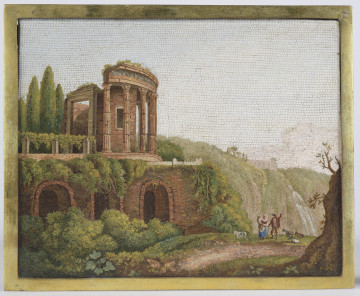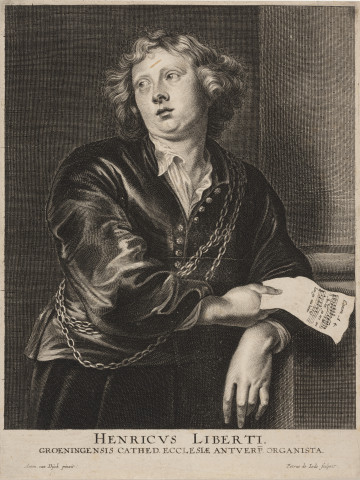
Temple of the Sibyl
Museum of King Jan III's Palace at Wilanów
Part of the collection: Varia
It is a plaque created using the micromosaic (mosaici in piccolo) technique, which – as in the case of mosaic – is based on creating a picture from pieces of glass or stones in different colours. The scale of micromosaic was largely reduced in comparison to the original mosaic technique, and the picture was composed of small, usually four-sided forms created through the proper cutting of thin strips of non-transparent glass. Such elements were subsequently arranged to present the designed picture on a thin base covered with consolidating mass (putty). The micromosaic technique was elaborated in the last quarter of the 18th century in Rome as a result of the highly advanced art of traditional mosaic-making performed in the Vatican mosaic studio (Studio del mosaico). The first artist credited with using the new dainty technique was Giacomo Raffaelli (1752–1836), but this kind of art soon became one of the more popular branches of Roman craft practised by many craftsmen whose workshops were concentrated around the Spanish square. Mosaici in minuto became one of the most popular souvenirs brought from Roman Grand Tours and this was probably how the presented plaque with a view of the Temple of Minerva Medica became a part in the Wilanów collection. Most probably, it forms a pair with the second object of a similar format, which shows the Temple of the Sibyl in Tivoli. The pair of objects was presumably brought to Wilanów by Izabela Lubomirska, née Czartoryska, or by her daughter and son-in-law Aleksandra and Stanisław Kostka Potocki. (T. Igrzycki, Roman micromosaics, Grand Tour. The Birth of Stanisław Kostka Potocki’s Collection, Warszawa 2005, pp. 264–265). The thematic scope of both pictures – ancient architecture – attracted the interest of representatives of North European aristocracy arriving in Italy. Such souvenirs combined a number of components sought after by them – they served as an iconographic document of ancient art, the exploration of which was one of the most important goals of the Grand Tour, were high-class works of art in themselves and could be an ideal supplement to private collections, the possession of which became a sign of the intellectual and property status of representatives of the wealthy class.
Author / creator
Dimensions
entire object: height: 13,5 cm, width: 15,2 cm
Object type
painting
Technique
mosaic
Material
glass
Owner
Museum of King Jan III's Palace at Wilanów
Identification number
Location / status

Museum of King Jan III's Palace at Wilanów

około 1900
National Museum in Szczecin

circa 1632
National Museum in Szczecin
DISCOVER this TOPIC
National Museum in Szczecin
DISCOVER this PATH
Educational path